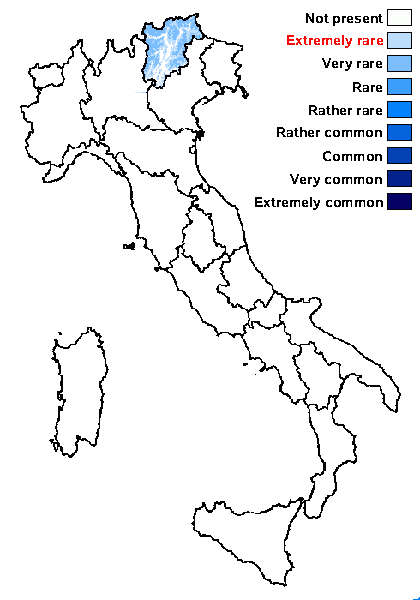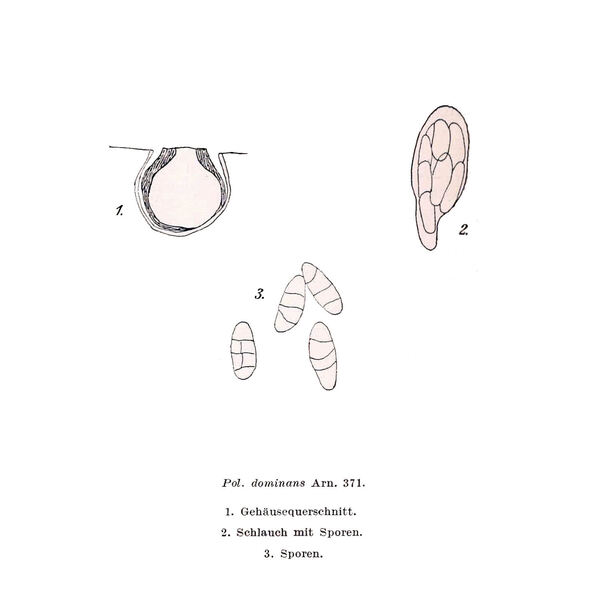Thelidium dominans Arnold
Flora, 52: 263, 1869.
Synonyms: Polyblastia dominans (Arnold) Zahlbr.
Distribution: N - TAA (Nascimbene & al. 2022).
Description: Thallus crustose, endosubstratic or rarely very thinly episubstratic, white, yellowish white or pale grey, sometimes with scattered dark lines, smooth to slightly farinose. Perithecia black, 0.2-0.4 mm across (in section), completely immersed in pits of the rock, globose, with a flattened ostiolar region. Involucrellum absent; exciple brown-black, often paler brown in lower part, thicker around the ostiole; hamathecium of periphyses and slender, branched periphysoids, interascal filaments absent; hymenial gel I+ red, K/I+ blue. Asci 8-spored, ellipsoid to clavate, K/I-, fissitunicate, the wall thickened above, with an ocular chamber, dehiscent by extrusion of an endotunica to form a delicate rostrum. Ascospores 3(-4)-septate to rarely submuriform with an incomplete longitudinal septum, hyaline, narrowly ellipsoid, 39-54 x 15-18 μm. Photobiont chlorococcoid. Spot tests: K-, C-, KC-, P-, UV-. Chemistry: without lichen substances.Note: a species resembling Polyblastia sepulta (of which it is sometimes considered as a synonym), but with narrowly ellipsoid, larger ascospores; on calcareous rocks; widespread in Europe and most frequent in the Central European mountains; from the Alps there are only a few scattered records; to be looked for further in the Italian Alps. According to Savić & al. (2008), the species, which was frequently included in Polyblastia, belongs to the Thelidium-clade, not to Polyblastia s.str.
Growth form: Crustose endolithic
Substrata: rocks
Photobiont: green algae other than Trentepohlia
Reproductive strategy: mainly sexual
Poorly known taxon in need of further study
Commonnes-rarity: (info)
Alpine belt: very rare
Subalpine belt: very rare
Oromediterranean belt: absent
Montane belt: extremely rare
Submediterranean belt: absent
Padanian area: absent
Humid submediterranean belt: absent
Humid mediterranean belt: absent
Dry mediterranean belt: absent

Predictive model
Growth form: Crustose endolithic
Substrata: rocks
Photobiont: green algae other than Trentepohlia
Reproductive strategy: mainly sexual
Poorly known taxon in need of further study
Commonnes-rarity: (info)
Alpine belt: very rare
Subalpine belt: very rare
Oromediterranean belt: absent
Montane belt: extremely rare
Submediterranean belt: absent
Padanian area: absent
Humid submediterranean belt: absent
Humid mediterranean belt: absent
Dry mediterranean belt: absent

Predictive model
 DOLICHENS
DOLICHENS


